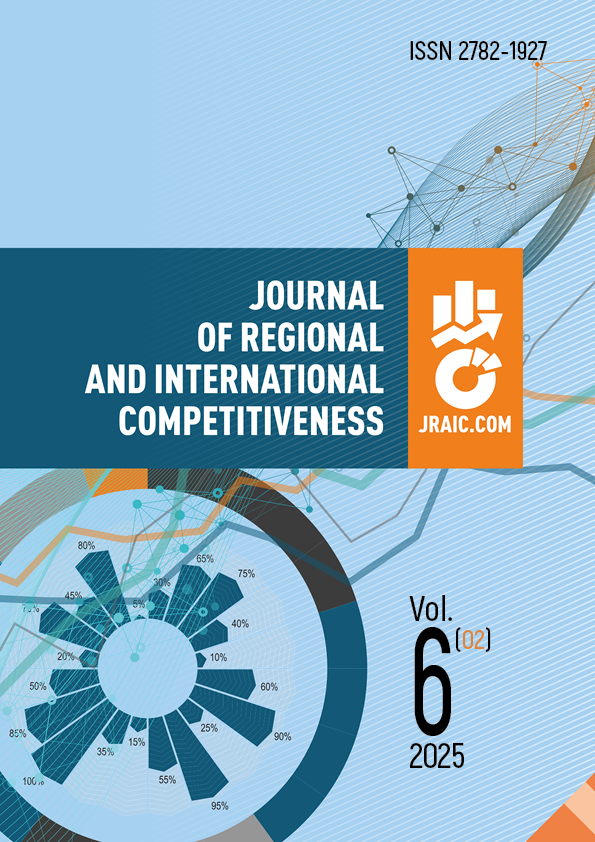Yaroslavl, Yaroslavl, Russian Federation
The article highlights the trend of a global sectoral shift in the localisation of foreign direct investment projects of multinational corporations from manufacturing to the service sector. Indeed, in terms of the global production it occurs mainly due to the innovative segment of the service sector. The access to highly qualified labour resources, investments in the reliable technological infrastructure, a favourable institutional environment determine the sustainable development of the segment. The research substantiates the procedure for concentrating the foreign direct investment in terms of the key elements of the national innovation system: strategic planning of technological development, infrastructure of scientific and technological initiative, research and development, and innovations. Moreover, to optimise limited resources, it identifies the expediency of implementing a policy of encouraging foreign direct investment through the special economic zones based on the global value chains and integrated into the national socio-economic context. However, the zonal policy should ensure stable business environment for residents, advanced infrastructure and competitiveness, prerequisites for embedding national companies in the global value chains, and the global investment trends. The research also defines the types of the most economically attractive special economic zones in the service sector, provides the best conditions for the localisation, their priority sectors, competitive advantages, and factors for sustainability increasing at the global and macro-regional levels.
special economic zones; service sector; manufacturing sector; servicification; foreign direct investment; innovation potential; global value chains
1. Albahari, A., Barge-Gil, A., Pérez-Canto, S., & Landoni, P. (2023). The effect of science and technology parks on tenant firms: A literature review. The Journal of Technology Transfer, 48(4), 1489–1531. Retrieved from https://doi.org/10.1007/s10961-022-09949-7
2. Arnold, J. M., Javorcik, B., & Mattoo, A. (2011). Does services liberalization benefit manufacturing firms? Evidence from the Czech Republic. Journal of International Economics, 85(1), 136–146. Retrieved from https://doi.org/10.1016/j.jinteco.2011.05.002
3. Atolia, M., Loungani, P., Marquis, M., & Papageorgiou, C. (2020). Rethinking development policy: What remains of structural transformation? World Development, (128), Article 104834. DOI: https://doi.org/10.1016/j.worlddev.2019.104834
4. Crozet, M., & Milet, E. (2017). Should everybody be in services? The effect of servitization on manufacturing firm performance. Journal of Economics & Management Strategy, 26(4), 820–841. Retrieved from https://doi.org/10.1111/jems.12211
5. Kummritz, V. (2016). Do Global Value Chains Cause Industrial Development? Graduate Institute of International and Development Studies. Retrieved from https://repec.graduateinstitute.ch/pdfs/cteiwp/CTEI-2016-01.pdf
6. Lei, Z., Baomin, D., Xin, Z., & Jin, Z. (2011). International R&D Networks. Review of International Economics, 19(2), 325–340. DOI: https://doi.org/10.1111/j.1467-9396.2011.00950.x
7. Miroudot, S., & Cadestin, C. (2017). Services in Global Value Chains: From inputs to value-creating activities. OECD: Publishing. Retrieved from https://doi.org/10.1787/465f0d8b-en
8. Nordås, H. K., & Rouzet, D. (2015). The impact of services trade restrictiveness on trade flows. OECD: Publishing. Retrieved from https://doi.org/10.1787/5js6ds9b6kjb-en
9. Peters, G., Minx, J., Weber, C., & Edenhofer, O. (2011). Growth in emission transfers via international trade from 1990 to 2008. Proceedings of the National Academy of Sciences of the United States of America, 108(21), 8903–8908. Retrieved from https://doi.org/10.1073/pnas.1006388108
10. Stöllinger, R. (2018). Asian experiences with global and regional value chain integration and structural change. The Vienna Institute for International Economic Studies. Retrieved from https://www.econstor.eu/bitstream/10419/204208/1/wiiw-research-rep-436.pdf




















